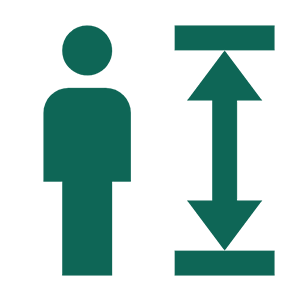Is Zone 5 Heart Rate Training Dangerous? Myths and Truths
Zone 5 heart rate training is an advanced technique that’s loved by fitness enthusiasts seeking high-intensity workouts to break through performance plateaus. It’s a powerful way to boost cardiovascular fitness and lactate threshold, but it comes with significant risks. Training in this high-intensity zone can strain your heart and body, particularly for beginners or those who don’t warm up properly. Misconceptions such as "the longer, the better" or "you can do it daily" often lead to ineffective or even harmful outcomes.
To harness the full potential of Zone 5 training while avoiding common pitfalls, you need a science-backed, controlled approach. Curious about how to safely maximize your efforts and reap the benefits of Zone 5 workouts? Let’s explore.
The Dual Nature of Zone 5 Heart Rate Training: Thrilling Yet Risky
Zone 5 training is like a double-edged sword. On one side, it promises unmatched results; on the other, it can overwhelm even seasoned athletes. Let’s break down the pros and cons.
Benefits: Why Athletes Are Drawn to Zone 5 Training
1. Break Through Plateaus
Ever hit a “wall” in running or cycling where no amount of effort improves your speed or endurance? Zone 5 training can help you smash through these limits.
- How it works: This type of training pushes your heart, lungs, and muscles to their maximum capacity, improving oxygen utilization and raising your lactate threshold (the point at which fatigue sets in).
- Who it’s for: Runners, cyclists, and high-intensity interval training (HIIT) enthusiasts will find it particularly effective for leveling up performance.
2. Burn Fat More Efficiently
If fat loss is your goal, Zone 5 training can be your secret weapon.
- The science: High-intensity workouts burn more calories in less time than steady-state cardio. Plus, the “afterburn effect” keeps your metabolism revved up for hours post-exercise.
- The payoff: You’ll torch calories and save time, making your workouts more productive.
Risks: Why Zone 5 Training Isn’t for Everyone
1. It’s Tough on Your Heart and Body
Zone 5 pushes your heart to its maximum workload. Without proper warm-up or if done for too long, this can lead to unnecessary strain on your cardiovascular system.
- Who’s at risk: Individuals with underlying heart conditions or those who jump into high-intensity workouts without preparation.
2. Overtraining Can Backfire
Ever heard of “overtraining syndrome”? Spending too much time in Zone 5 can lead to exhaustion, decreased performance, and even injury.
- Warning signs: Persistent fatigue, reduced immunity, and slower recovery are red flags that you’re pushing too hard.
3. Not Ideal for Beginners
Zone 5 is designed for advanced athletes, not beginners. Novices often underestimate its intensity, leading to burnout or physical discomfort.
- Better options: Start with lower-intensity zones (Zone 2 or Zone 3) to build a solid foundation before tackling Zone 5.
Common Misconceptions About Zone 5 Training
Despite its benefits, Zone 5 training is surrounded by myths that lead to mistakes and setbacks. Let’s clear up the confusion.
Myth 1: The Longer You Train, the Better the Results
- Reality: Zone 5 is a high-intensity zone meant for short bursts of effort. Prolonged training can do more harm than good.
- Why: Your body can only sustain this intensity for limited periods before the risk of injury or exhaustion outweighs the benefits.
- What to do:
- Limit each session to 10–15 minutes of Zone 5 work, broken into intervals.
- Focus on the quality of your efforts, not the duration.
Myth 2: You Can Train in Zone 5 Every Day
- Reality: High-intensity training requires adequate recovery time to be effective.
- Why: Daily Zone 5 workouts can lead to overtraining, reducing your fitness gains and increasing the risk of injury.
- What to do:
- Keep Zone 5 sessions to 1–2 times per week.
- On other days, focus on lower-intensity recovery workouts (Zone 2 or Zone 3).
Myth 3: Zone 5 Training Works for Everyone
- Reality: Zone 5 is tailored for experienced athletes, not beginners or individuals with health concerns.
- Why: Without a strong fitness foundation, Zone 5 training can overwhelm your body and lead to injury or fatigue.
- What to do:
- Beginners should focus on building endurance in lower zones before attempting Zone 5.
- Use a heart rate calculator (like the Healthycalc Target Heart Rate Calculator) to identify your Zone 5 range and train safely.
How to Master Zone 5 Training Safely and Effectively
1. Manage Session Duration and Frequency
| Parameter | Recommended Range |
|---|---|
| Session duration | 10–15 minutes (split into intervals) |
| Weekly frequency | 1–2 times |
| Rest between intervals | 1–2 minutes |
2. Use Periodization to Gradually Build Intensity
| Week | Goal | Interval Duration | Sets | Rest Between Sets |
|---|---|---|---|---|
| Week 1 | Adaptation Phase | 2 minutes | 3–4 sets | 2 minutes |
| Weeks 2–3 | Progression Phase | 3–4 minutes | 4–5 sets | 1–2 minutes |
| Week 4 | Recovery Phase | 1–2 minutes | 2–3 sets | 2 minutes |
3. Prioritize Warm-Up and Cool-Down
| Stage | Duration | Focus |
|---|---|---|
| Warm-up | 5–10 minutes | Dynamic stretches or light cardio to activate your body |
| Cool-down | 5–10 minutes | Low-intensity activity to gradually lower heart rate |
| Post-workout | Within 30 minutes | Replenish with protein and carbs to aid recovery |
4. Track Your Progress with Heart Rate Monitors
| Tool | Purpose |
|---|---|
| Heart rate monitor | Real-time tracking of your heart rate |
| Zone calculator | Tools like Healthycalc to define your Zone 5 range |
| Fitness apps | Log workouts and analyze trends |












 EN
EN









